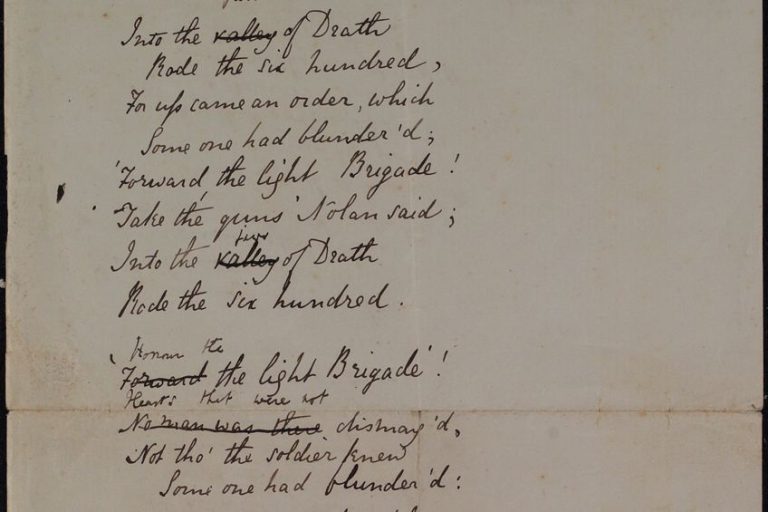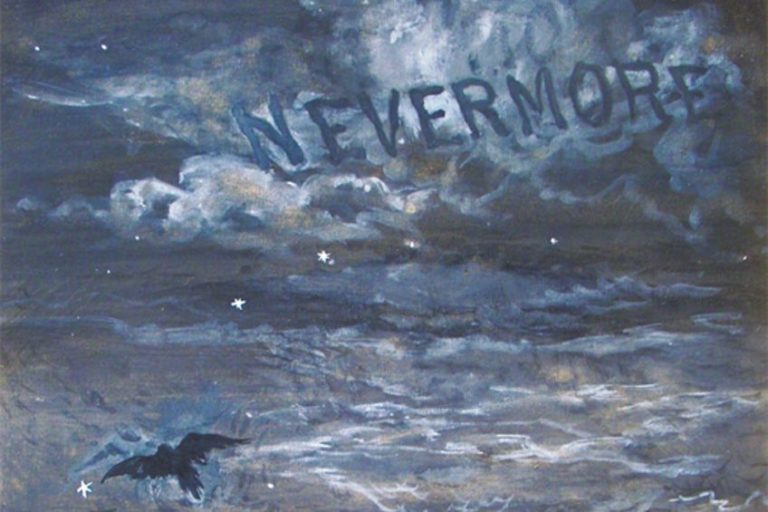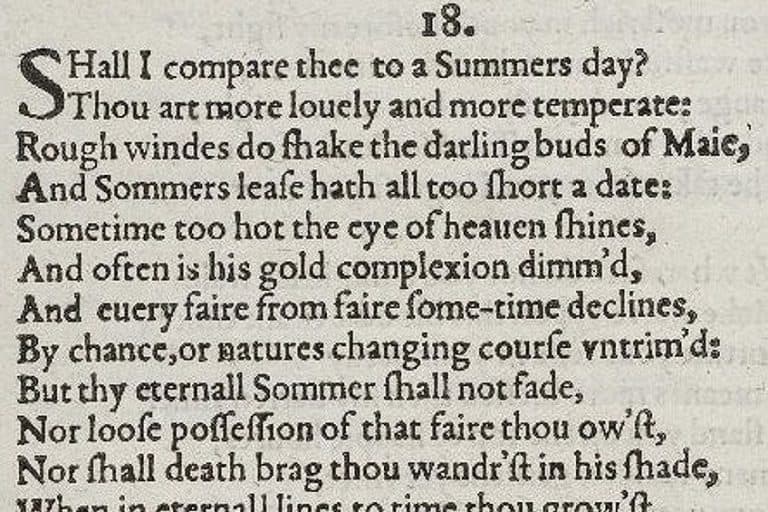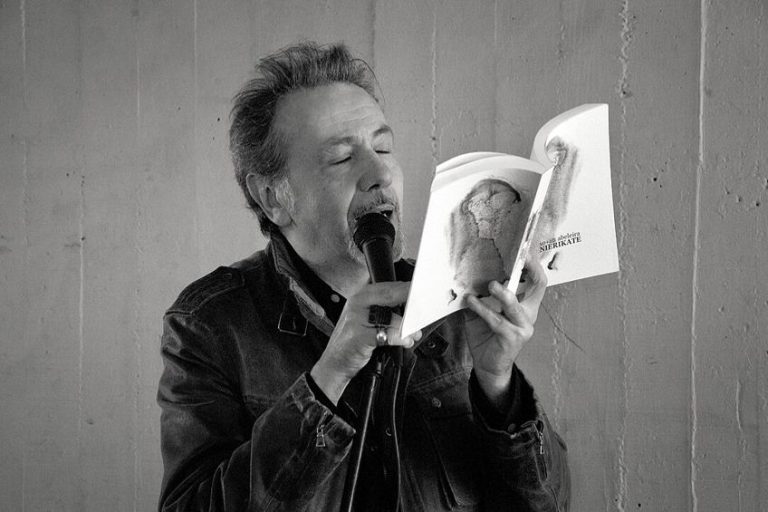Anaphora in Poetry – A Specific Style of Poetic Repetition
There are far too many poetic techniques out there and anaphora is one of them! If you ever find yourself asking, “What is anaphora in poetry?”, then this article is for you. Over the course of this discussion, we will examine a definition of anaphora in poetry, the characteristics of this poetic technique, the uses of it in poetry, and a few anaphora examples in poetry. If this sounds like something you would be interested in learning about, then keep reading!
Table of Contents
A Look at Anaphora in Poetry
Anaphora is simply one of many different types of poetic devices out there. It certainly is a powerful one when used correctly, and we will soon have a look at a few anaphora examples that do use it very effectively. However, before we jump into our more in-depth discussion of anaphora in poetry, we are first going to provide a brief summary for those who don’t have the time to read the entire article.

Summary of Anaphora in Poetry
Let us have a quick look at a summary of anaphora in poetry. Not everyone has the time or energy to read through an entire article, and you may also need a quick refresher rather than an explainer:
- Anaphora is the repetition of phrases at the beginning of lines. This technique entails the use of a repetitive phrase at the beginning of a number of separate lines. This produces a rhythmic effect that serves as a powerful means of reinforcement.
- Anaphora can be used for emphasis. One of the primary functions of anaphora in poetry is to highlight some important thematic ideas. It allows for reinforcement that forces the reader to pay attention to the ideas being expressed.
- Anaphora is often used in rhetoric too. There are many examples of non-poetic texts, such as speeches, that also make use of this technique. For instance, the famous I Have a Dream speech by Martin Luther King is a good example of this technique outside of poetry.
This has been our short and sweet summary of anaphora in poetry, but if you want to learn more about this poetic technique, then you’ll have to keep reading.
Let’s first start with what exactly anaphora is in the first place.
A Definition of Anaphora in Poetry
Poetry is absolutely riddled with different examples of repetition. There are many different types, such as rhyme, rhythm, alliteration, assonance, and so on. Furthermore, anaphora is one of the many different examples of repetition in poetry. In this case, the repetition is at the start of lines, and it entails the repeated use of a certain phrase or line.
This means that successive lines do not deviate from their openings, but they can deviate from other parts of the line. A made-up example may help to illustrate this a little better to show how there is repetition while also allowing for variation:
I like hawks.
I like walks.
I like talks.
There may be needless rhyme here for the sake of it, but there is also a repetition of the “I like” idea while adding on something different each and every time. This reinforces the idea of a poem that uses a technique like this, but we will explore some of those ideas in more depth below.

However, before we get to that next part, anaphora can be seen as an opposite, of sorts, of epistrophe. This is a form of repetition, and it entails the repeating of words or phrases at the end of lines rather than the start of lines. So, it is the same kind of repetition but in a different place. With that explainer over, let’s hop straight into what anaphora can do in poetry.
The Characteristics and Uses of Anaphora in Poetry
Anaphora has a number of different characteristics that we could discuss. The most obvious of these being the fact that as a type of repetition, it can help through the use of a repetitive structure, to reinforce and highlight a certain idea. This is a means of emphasis. This is probably the most common way in which anaphora can be used in poetry. We want to make sure that the reader understands us, so, we repetitively use a certain phrase to ensure that it is reinforced.
However, other than this, it is not purely repetitive. The repetition does contribute to rhythm, but it also allows for variation.
If you vary what is said after the anaphora sections, you can use that basic structure to create a reinforcing idea that uses many different images. For instance, imagine repetitively using “I can” and then each time adding something onto it that reinforces the idea that you can do all of these things. This can also contribute to a certain sense of unity within a text. The use of anaphora, which is a repetitive technique, has the ability to allow you to see it as a unified whole. This can be beneficial to many poems. And all of these elements operate together to aid in the emotional impact of what is being repetitively stated.
A Few Anaphora Examples in Poetry
Anaphora has been used in poetry for a very long time as it is an effective device for a number of reasons, as has been discussed above. However, it can often be beneficial to examine a few examples of something when trying to understand it. And so, to aid in answering the question, “What is anaphora in poetry?”, we are going to have a look at three separate anaphora poems to see how this device can be used in a practical sense.
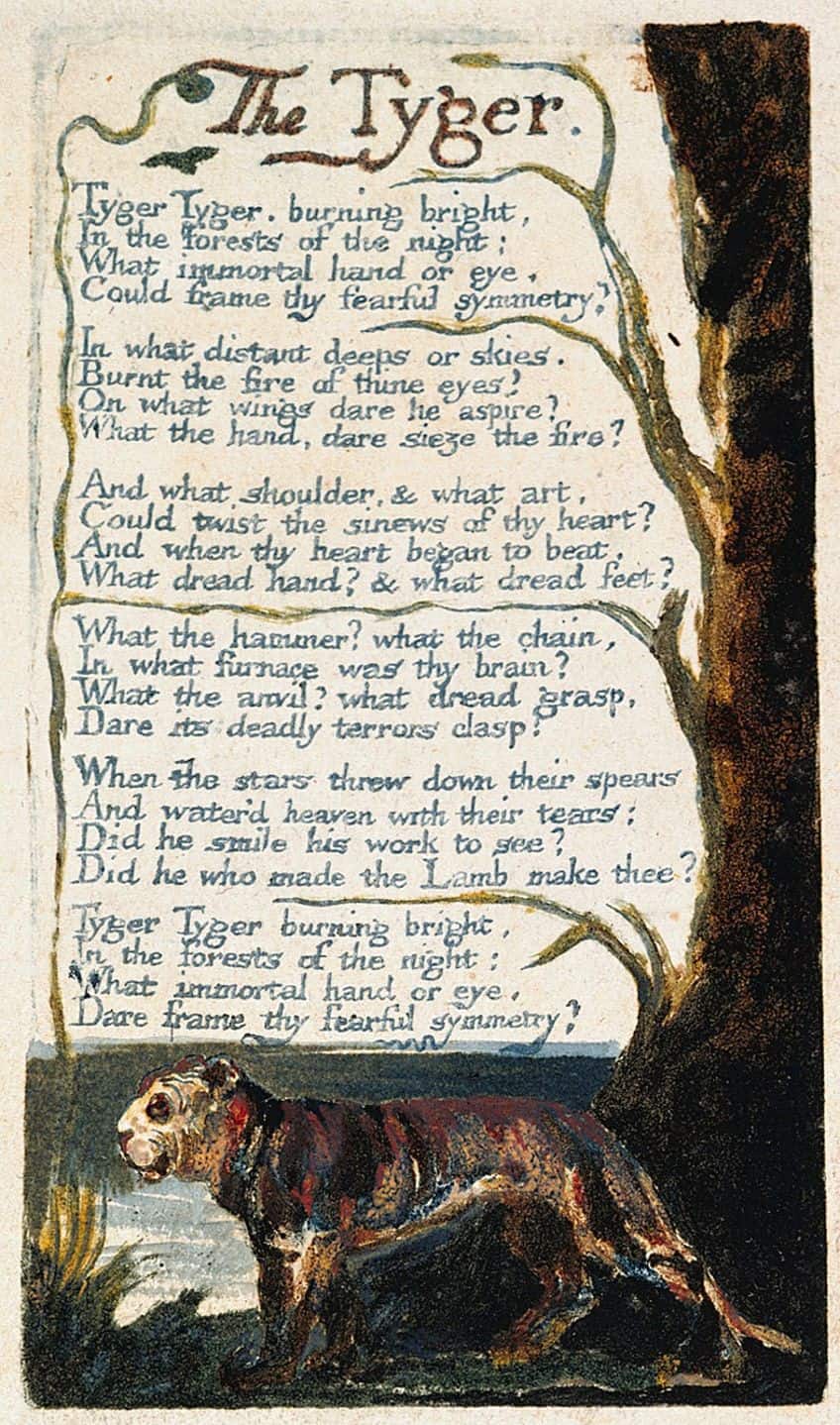
The Waste Land (1922) by T.S. Eliot
| Date Published | 1922 |
| Type of Poem | Modernist poem |
| Rhyme Scheme | None |
| Meter | None |
| Topic | Post-war disillusionment |
The Waste Land is a poem that cannot be classified as a simple anaphora poem. Instead, it includes a good anaphora example. The reason for this is that this poem is a very long one. It is multiple pages long and has a number of different sections that all have their own unique ideas and features in them. In terms of anaphora, we need to look at section five of the poem.
This section, called “What the Thunder Said”, makes use of anaphora three times in a row.
This section uses “after the” to imply and reinforce a future of some kind. In this case, it is after torchlight, silence, and agony. Each of these ideas serves to further reinforce the ideas of disillusionment that the poem is attempting to convey to us. However, The Waste Land is a famously difficult poem to read, and so, while it does make use of anaphora here, there are a variety of other sections that do not use any poetic techniques that are anywhere near similar to this repetitive device.

I Have a Dream (1963) by Martin Luther King Jr.
| Date Published | 1963 |
| Type of Poem | Speech |
| Rhyme Scheme | None |
| Meter | None |
| Topic | Equality |
I Have a Dream is likely the most famous instance of this technique. However, it is not actually an anaphora poem. It isn’t a poem at all. This is instead the most famous speech of the American Civil Rights Movement. The poem was addressed to the American people as a whole, and as King stood upon the podium, he repeatedly told them all that he has a dream. And the repetition of the phrase, “I have a dream”, has likely contributed to this speech being one of the best-known in the world.
From an anaphora perspective, it is a means of emphasizing the idea of this dream.
However, each time King used the phrase, he would add something to the end of the anaphora section. He would use some kind of an image that was associated with this dream of equality. The most famous of them all, of course, being the statement that “I have a dream that my four little children will one day live in a nation where they will not be judged by the color of their skin, but by the content of their character”. This section, especially the judgment of character instead of skin color, has become one of the most famous slogans of equality around the world.

Still I Rise (1978) by Maya Angelou
| Date Published | 1978 |
| Type of Poem | Lyric poem |
| Rhyme Scheme | Mostly ABCB |
| Meter | Trochaic tetrameter |
| Topic | Self-respect, confidence, and the African American experience |
Still I Rise is a phenomenal example of anaphora in poetry, but the use of this technique is not persistent throughout the poem. Instead, there are a handful of differing variations of “I rise”. The title itself obviously has a similar layout to this, and other examples of the form, in this poem, include “I’ll rise”, “Still I’ll rise”, and “I rise”. The last of these is repeated twice in the second last stanza and five times in the final stanza (the last three lines are also simply “I rise” three times in a row).

This shows a stunning use of this particular technique, and it operates on a thematic level too. The poem is about standing up to the bigotries and prejudices of the world and the people in it and continuing to rise above it all. So, repetitively stating that “I rise” becomes something of a battle cry in this instance. It is a way of repeatedly telling all of those bigots that they have no power over her. They are nothing. She’ll just rise.
Today, we have had a look at the poetic technique known as anaphora. We have discussed a definition of this device, some of the characteristics and uses of it, and a number of anaphora examples to illustrate. Hopefully, this has helped with understanding what anaphora is in the first place. This is a potent device that has been used in many poems, and if you like this technique, seek out some other anaphora poems that were not in this article and try to see why this device was used in that particular poem!
Frequently Asked Questions
What Is Anaphora in Poetry?
This is a poetic device that makes use of repeated phrases or lines that have the same beginning words. This creates a kind of rhythmic effect as line after line repeats the same phrase. It is a useful technique, which can also be a powerful one, that can be found in many poems.
What Are the Characteristics of Anaphora in Poetry?
The primary characteristic of the use of anaphora in poetry is as a rhythmic device that adds emphasis and allows seemingly disparate elements to be related to one another. The constant repetition of the same phrase also allows for variation within those repeated segments as the same opening is used, but with different elements that follow.
What Is the Difference Between Anaphora and Repetition?
Repetition is a very general term that refers to practically everything that is repetitive in some way. Rhyme, meter, alliteration, and so on, are all examples of repetition. Anaphora is the repetition of opening phrases, and, as a result, it is also an example of repetition.
What Are Some Famous Anaphora Poems?
There are many texts that make use of anaphora. For instance, there are poems like Still I Rise (1978) by Maya Angelou that make phenomenal use of it throughout, and others that use it more sparingly, such as The Waste Land (1922) by T.S. Eliot. However, this technique is used far more widely than only in poetry, and can be seen in places such as the I Have a Dream speech (1963) by Martin Luther King Jr. This is a very useful poetic device that can be used in many different contexts.
Why Do Poets Use Anaphora in Poetry?
There are many reasons that a poet may decide to make use of anaphora in their poems. For instance, as it allows for emphasis, a poet may use it to highlight a certain thematic element. It also allows for better rhythm, and this may be desirable for a poet. It could also be for a kind of structural unity. Thus, there are many reasons for the use of anaphora in poetry.
Justin van Huyssteen is a freelance writer, novelist, and academic originally from Cape Town, South Africa. At present, he has a bachelor’s degree in English and literary theory and an honor’s degree in literary theory. He is currently working towards his master’s degree in literary theory with a focus on animal studies, critical theory, and semiotics within literature. As a novelist and freelancer, he often writes under the pen name L.C. Lupus.
Justin’s preferred literary movements include modern and postmodern literature with literary fiction and genre fiction like sci-fi, post-apocalyptic, and horror being of particular interest. His academia extends to his interest in prose and narratology. He enjoys analyzing a variety of mediums through a literary lens, such as graphic novels, film, and video games.
Justin is working for artincontext.org as an author and content writer since 2022. He is responsible for all blog posts about architecture, literature and poetry.
Learn more about Justin van Huyssteen and the Art in Context Team.
Cite this Article
Justin, van Huyssteen, “Anaphora in Poetry – A Specific Style of Poetic Repetition.” Art in Context. November 30, 2023. URL: https://artincontext.org/anaphora-in-poetry/
van Huyssteen, J. (2023, 30 November). Anaphora in Poetry – A Specific Style of Poetic Repetition. Art in Context. https://artincontext.org/anaphora-in-poetry/
van Huyssteen, Justin. “Anaphora in Poetry – A Specific Style of Poetic Repetition.” Art in Context, November 30, 2023. https://artincontext.org/anaphora-in-poetry/.




